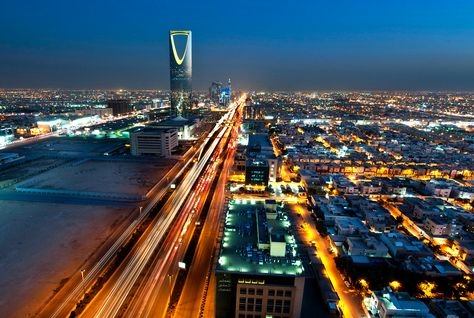More than any other country, Saudi Arabia is synonymous with oil and rightly so, holding around 270 billion barrels of oil or around 20% of the world’s proven conventional oil reserves, according to some estimates.
Indeed, the effect of oil wealth is worth a blink. The country’s population multiplied by six times since the start of the oil boom in 1960, supported by an economy that has grown by a remarkable 16 times over 50 years or a real GDP growth of more than 5.5% per annum over a huge stretch of time.
Oil production has been largely stable over the past 20 years, averaging around 10 million barrels per day (bpd) (peak of around 11 million bpd), compared with less than 3 million bpd in the late 1950s, when the oil boom began. Now, however, the production increase is important as ever, not as much as because of what the international price effects will be, but to meet the growing local consumption, which is currently around 2.8 million barrels after growing 7% per year over the last 10 years.
In another 10 years, 2.5 million bpd or so will have to come online to maintain current export level of just above 7 million bpd and by then the country will, therefore, have to fully meet its stated ability to produce 12.5 million bpd.
Natural gas production in the kingdom currently stands at 1.3 million bpd of oil equivalent, and its development will be crucial if oil supply ramp-up cannot keep pace as expected.
The catch here is that domestic consumption is not just a luxury, like taking chocolate from your father’s store. The 60 cents per gallon pump prices are mouth watering, but transportation only accounts for 15% of domestic use. Rather, the majority of the domestic oil is consumed for thermal power generation, a significant portion of which is then used to operate desalination plants to supply water in a desert environment.
Therefore, population growth is highly energy-sensitive in an area which has enjoyed a virtually ‘untroubled from outsider’ existence throughout history, due to the inhospitable climate.
The budgeted expenditure is placed at around $180 billion, which probably includes a $30 billion permanent step-up per year due to recent spending initiatives. What is encouraging is that almost a quarter of the budget will be spent on education and training and around another quarter on development projects, including new housing units. This should bode well for diversification of domestic industries, long-term productivity and spur household consumption, which at 35% of GDP (70% in US) and with high saving rate (30%+), is lower than government spending.
Take an optimistic case – oil prices are more than $80 per barrel while oil and gas production ramp-up will meet local demand.
In this case, the government will be able to sustain spending of 15% of GDP on infrastructure and human capital development. This will, in all likelihood, spur domestic consumption growth as well as foreign investment.
Countries with similar per capita GDP – South Korea and Taiwan – have posted real GDP growth of between 2-3% over last decade. However, Saudi non-oil GDP can easily sustain a 5% growth, because oil revenue is a bonus which requires only small number of hands to exploit and has kept attention away from a relatively undeveloped non-oil sector including the human capital potential.
The Express Tribune
June 4
























































